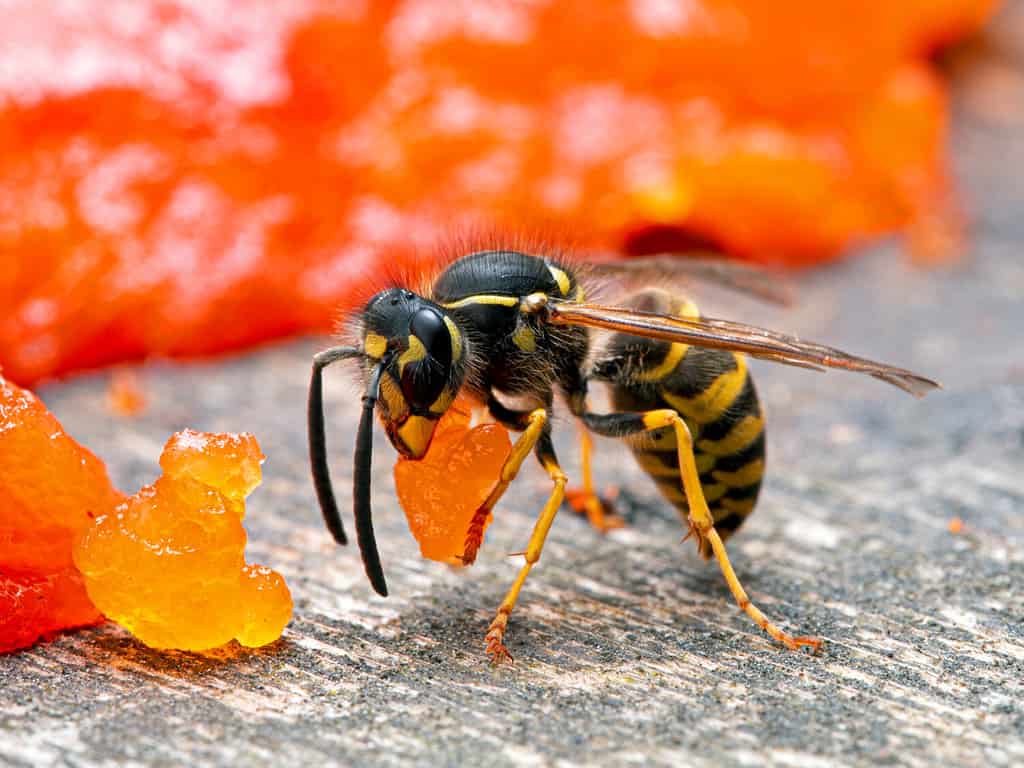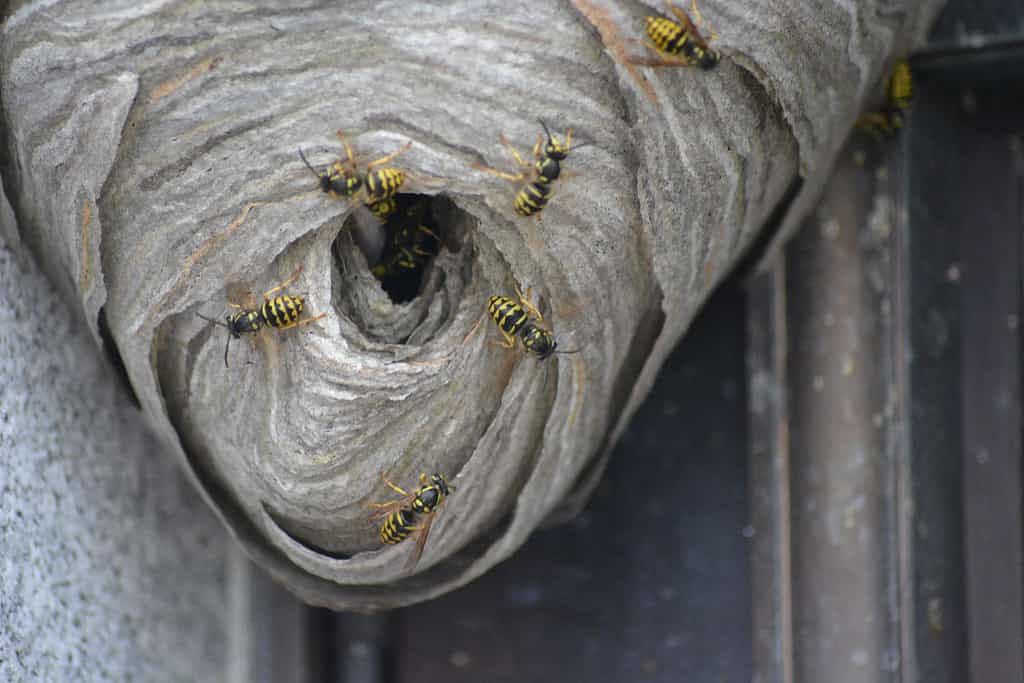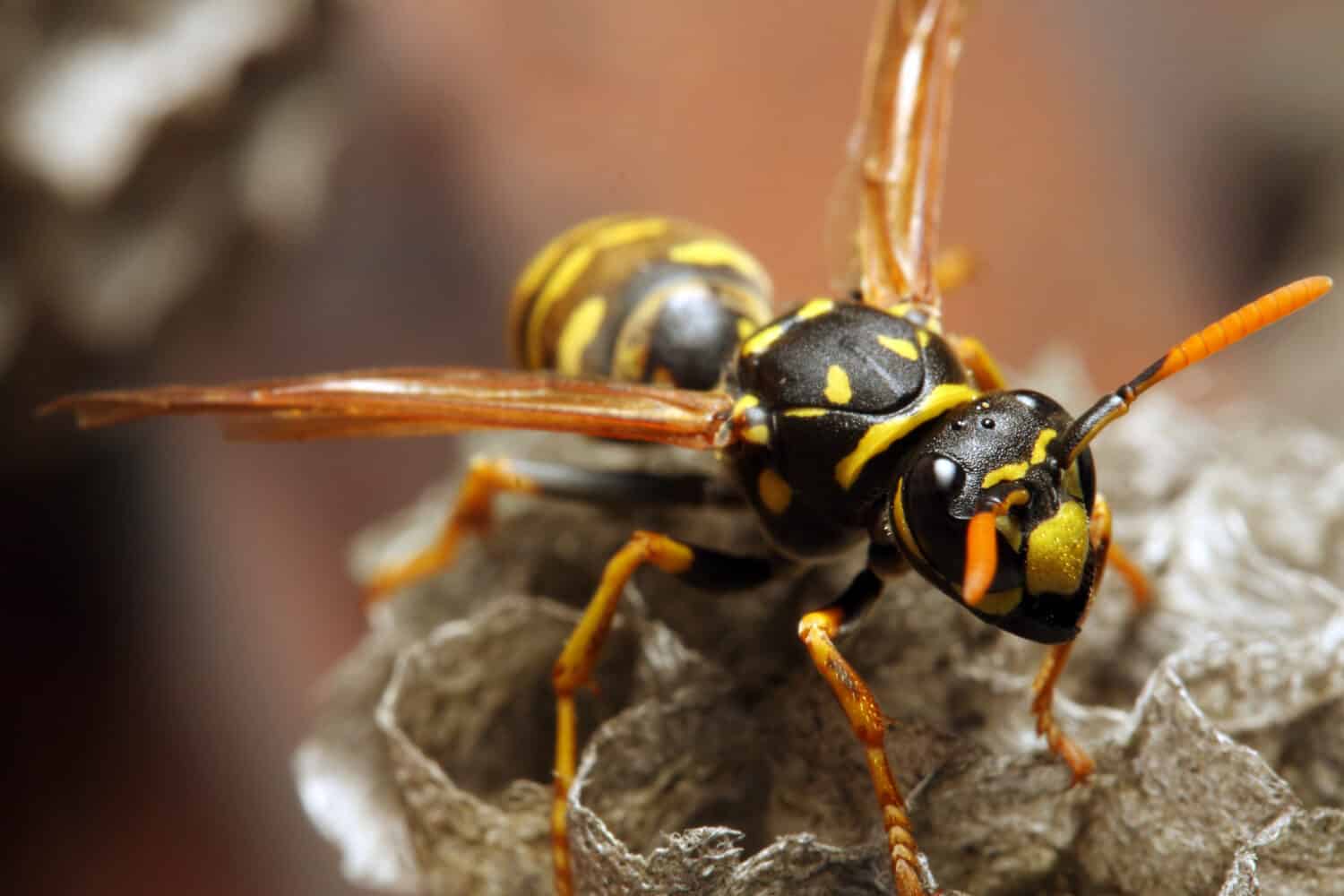Gasoline and a Fuse Spells a Fiery Doom for These Yellow Jackets!
In the dark of night, a man carries out a calculated plan. His goal: to eliminate a threatening yellow jacket nest. He chooses the moment of least activity, during the night, and pours gasoline into the nest’s entrance. Quickly, he seals the opening with a small grate, ensuring no escape. He stretches out a line of combustible fuse, extending it from the nest like a trail of impending doom. A single spark sets the fuse alight, directing an unyielding blaze into the heart of the nest. The flames burst forth, consuming the underground fortress.
The camera shifts to a later moment, revealing a close-up of the inferno. Amidst the chaos, a lone yellow jacket stands at the entrance, singed and defeated. Flames dance defiantly around it, symbolizing the fall of its dominion.
As dawn breaks, the scene transitions again, portraying the aftermath of nature’s fiery reckoning. The nest now remains as a mere remnant, a testament to the man’s resolve. Countless charred yellow jacket carcasses create a vivid image of the night’s clash—a decisive victory in the territorial battle.

Yellow jackets prefer to scavenge sweet foods and even meat rather than drink nectar. These pesky insects will bother people for their drinks or food during the summer, threatening to sting if shooed away!
©Ernie Cooper/Shutterstock.com
Are Yellow Jackets Pollinators Like Bees, and Should They Be Protected?
Yellow jackets, distinct from honeybees, aren’t primary pollinators. Honeybees crucially pollinate crops and plants, unlike yellow jackets, which minimally contribute. They scavenge food scraps and insects rather than engage in pollination.
Does the same protection apply to both? Yellow jackets’ distinctly different ecological role to honeybees implies different conservation attitudes between the two. Honeybees’ decline severely impacts agriculture, necessitating safeguards. Yet, yellow jackets’ aggression and potential harm complicate matters, as they serve a role that left unchecked can take over and damage other species. Balancing ecological value with safety is vital to the wellbeing of all the species in the environment.
The two species uniquely interact with their environment, and honeybees are the only pollinators of the pair. Tailored strategies are essential to different species filling different niches within an ecosystem. Honeybees require and deserve protection due to their crucial pollination role, without which famine would be widespread! But yellow jackets aren’t to be entirely eradicated either. Should you come across a yellow jacket in your yard, don’t worry about killing crucial pollinators. If they pose a threat to young children and pets, it should be alright to destroy a yellow jacket nest.

Yellowjackets will aggressively defend their nest,
which can be built above ground or in pits beneath the soil!
©Daniel Loya/Shutterstock.com
Is Fire and Fury the Best Method for Destroying a Yellow Jacket Nest?
Let’s talk about burning yellow jacket nests to get rid of them. Burning sounds strong, but it brings up worries about causing accidental dangers. Smoke and flames could be a problem in populated areas, causing trouble for people and any surrounding wildlife. The danger of the fire spreading is always there, so using fire to destroy one of these nests must always be done cautiously. On the other hand, there are a few different ways to destroy these nests.
You can use bug elimination sprays the right way to target the nest without hurting or damaging anything else. Specific bug sprays made for underground nests truly go deep, though these can potentially poison soil and plants. Moving nests takes a lot of work, but it’s the one alternative to actually destroying the nest. Traps that use bait are gentle and catch yellow jackets without hurting them. Sucking out the nest with a vacuum is careful and doesn’t hurt the environment much, but one needs to have a lot of trust in their vacuum bag! So, what’s the best way to get rid of a nest? It’s about finding a balance between what works, keeping safe, and taking care of nature depending on the specific scenario one finds themselves in!
Watch This Nest of Yellow Jackets Go Up in Flames!
Thank you for reading! Have some feedback for us? Contact the AZ Animals editorial team.








